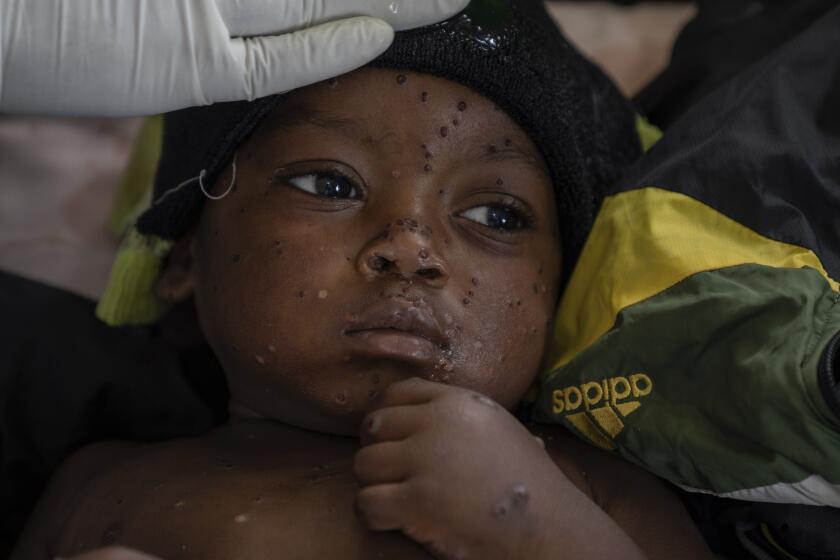Swine flu still spreading through U.S. as concerns grow about school restarting
The pandemic H1N1 influenza virus is unexpectedly continuing to spread easily through the United States during the summer months, and health authorities expect a bump in transmission in about six weeks, when school goes back into session -- perhaps two or three months earlier than is normally seen with seasonal flu.
“Every year, there is an increase in flu when children go back to school” and viruses are being shared in close quarters, Dr. Anne Schuchat, director of the Centers for Disease Control and Prevention’s National Center for Immunization and Respiratory Diseases, said Friday in a telephone news conference. “This year, it is already circulating in summer camps, military units and so forth, so we are expecting when school opens we will see [a bigger than normal] increase.”
Schuchat said she thinks the unusually high rate of transmission during the heat and humidity of summer, which normally sharply reduce transmission, may be because many Americans have no resistance to the virus from prior exposure. But there are “no data” to suggest why transmission is continuing, she said.
As of Friday, the CDC reported more than 40,000 laboratory-confirmed cases of the virus (commonly known as swine flu), 4,800 hospitalizations and 263 deaths. Experts believe more than a million Americans have been infected, however. Schuchat said the CDC would probably stop reporting cases soon because most people who are infected don’t get tested.
The World Health Organization, which has reported nearly 100,000 confirmed cases worldwide, said Thursday that it would stop counting cases because that required too much unnecessary work by health authorities. The agency had said a week earlier that it recommends local agencies no longer test for the virus unless they have not previously had cases or there is an unusual outbreak.
The WHO said earlier this week that healthcare workers should be the first to be immunized with a pandemic influenza vaccine, both because they are at highest risk due to their exposure to patients and because infected workers could spread the virus to hospitalized patients and others at high risk. Beyond that, the agency said, individual countries should set their own priorities for other groups, vaccinating schoolchildren if their goal is to limit transmission or vaccinating high-risk groups if their goal is to limit illness and deaths.
Schuchat said the CDC’s vaccine advisory committee will meet next week to set this country’s priorities. The Obama administration, however, has already said that it will make the vaccine available to schoolchildren at no charge, budgeting as much as $7.5 billion for the effort beyond the $2 billion already committed for vaccine ingredients.
Dr. Jesse Goodman, acting deputy commissioner of the Food and Drug Administration, said at the same news conference that an H1N1 vaccine will not be available until well after school has begun. Companies and the National Institutes of Health are still planning clinical trials for the pandemic vaccine, and it will be at least two months into such trials before any data are available, he said.
There have also been fears that a vaccine might not be available. The handful of companies that produce influenza vaccines have been inundated with orders, and some, such as Baxter International Inc., have said they are unable to accept any further orders.
Because the vast majority of vaccine production is done overseas, some experts have speculated that a shortage will lead the countries where it is produced to limit exports so that their own populations will have full access.
Schuchat, however, said health authorities are not worried about such a possibility. “We are not concerned about meeting expectations for the vaccine. We haven’t gotten any information that makes us question the supply.”
--
More to Read
Sign up for Essential California
The most important California stories and recommendations in your inbox every morning.
You may occasionally receive promotional content from the Los Angeles Times.










